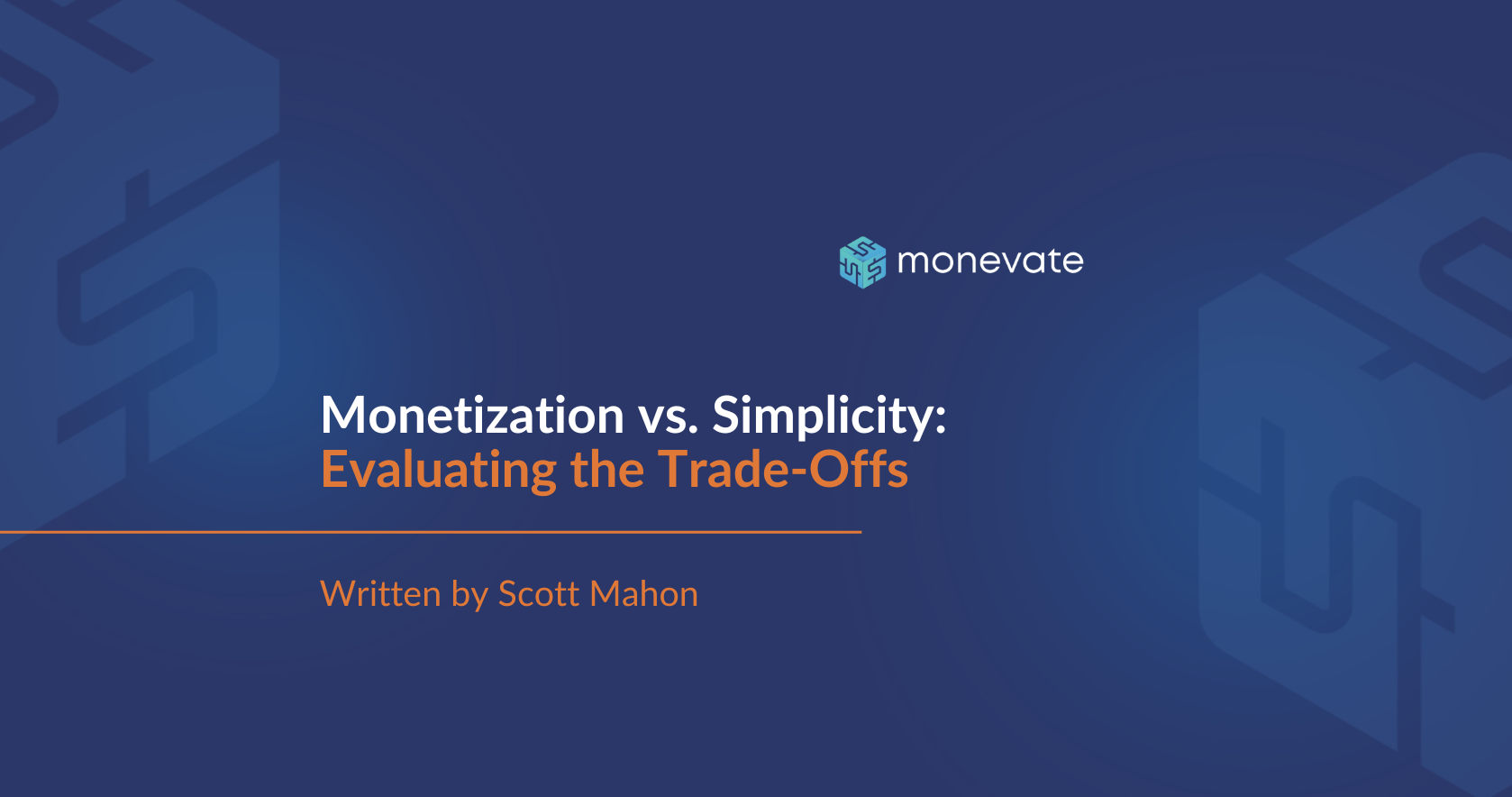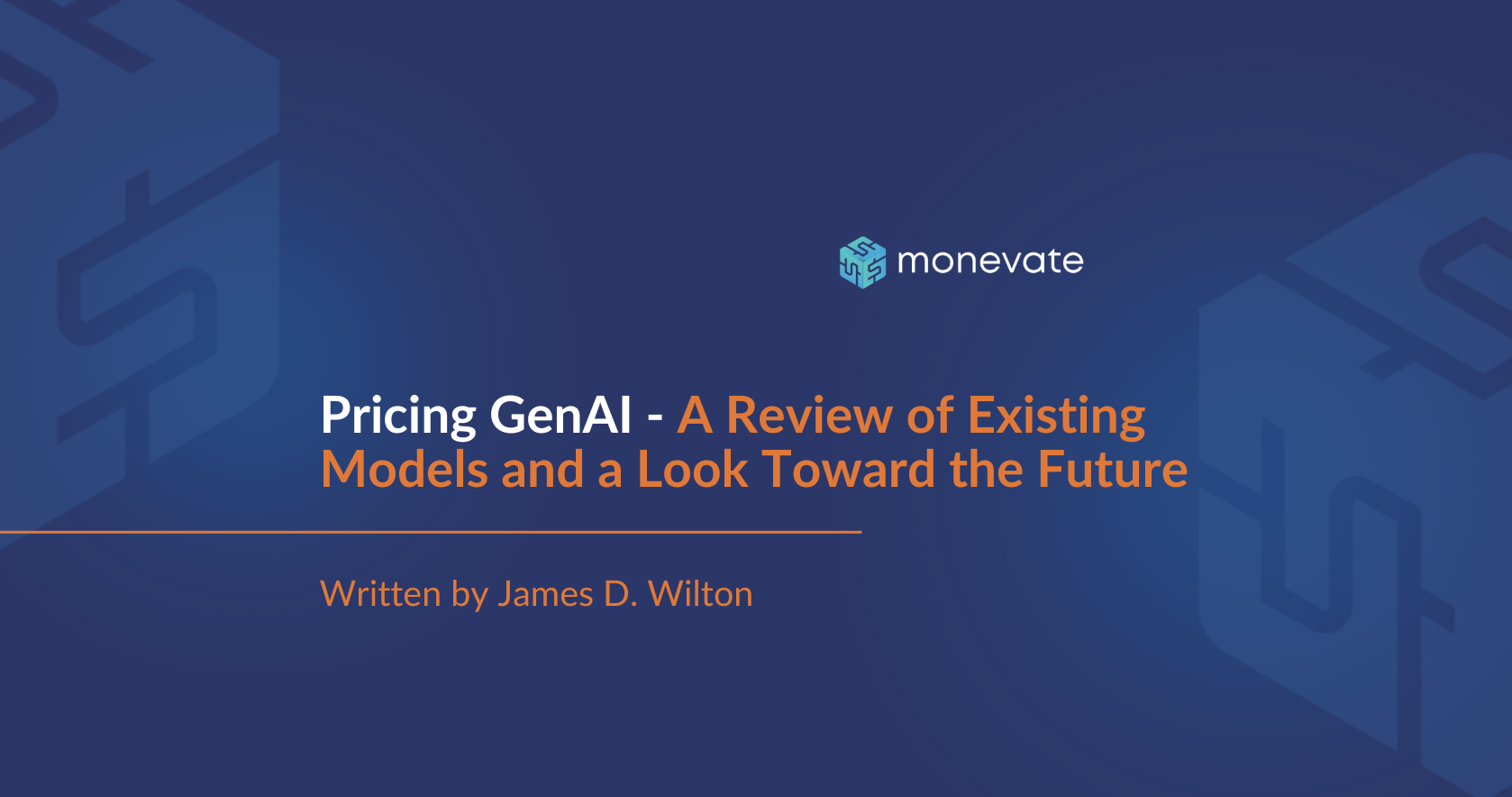Usage-tiered user license models – the next big thing in GenAI pricing?
The following is an edited excerpt from Capturing Value: The Definitive Guide to Transforming SaaS Pricing and Unshackling Growth, the new book by Monevate founder James D. Wilton. Chapter 6 is entitled “The Cutting Edge: Innovative monetization models” and among other emerging pricing models and trends it features pricing models for GenAI.
Capturing Value is available in hardcover, paperback, or Kindle here.
Monevate Partner, Malvika Gupta, also recently led a popular masterclass on 'Mastering GenAI Product Pricing: Trends, Strategies, and Case Studies'. You can watch the full recording, get access to the slides & transcript, and unlock 20+ other pricing masterclasses by joining The Cube, our free pricing community.
GenAI has been the hottest topic in tech for at least the last two years. OpenAI’s ChatGPT products took the world by storm, DeepSeek has seemingly upended the industry, and every other tech article or item of news has an AI component. Sentiments seem mixed between giddy excitement at its potential, extreme fear at its potential, and general confusion about what we should do with it.
One of the biggest debates in GenAI is how best to monetize it, and that’s a question that still does not have a definitive answer.
Usage-based pricing for GenAI
The challenges with GenAI remind me very much of the early challenges with usage-based pricing, discussed back in Chapter 3. At the moment, there’s a high usage cost to GenAI due to the computing resources necessary to drive it. The costs are so high, in fact, that the knee-jerk reaction to this is to set prices based on the drivers of this computing cost, which is often something akin to “number of queries” – the amount of times AI is asked a question will drive the fees.
The Back-End Foundation Models – the models that power the AI features we interact with, such as GPT-4 by OpenAI, Stable Diffusion by Stability AI, Llama 2 by Meta, and BERT, have all adopted usage-based models. In this way, the vendors know that if they set their price per unit above the cost per unit (or close enough to it that they can stomach it in the short term) they will sufficiently cover their costs, even if usage is much higher than predicted.
As we have already discussed, usage doesn’t always scale well with value, and so it is the case with this technology. A customer may agree that if they run forty queries through an AI tool, they are getting significantly more value than if they only run one query through it. But they may not necessarily agree that running two queries delivers twice the value of running only one.
Anyone who has worked with ChatGPT or a similar technology knows that it takes time to get what you’re looking for. You write a prompt, and it doesn’t generate the answer you want, so you refine the prompt and try again. Once you have done your prompt engineering and trained your model, your hit rate is going to be much higher. But still, you will not always receive new and unique value through every query.
This creates a problem for monetizing this usage. While the costs are covered, you do not generate value at the same rate as you increase the costs. Moreover, it is unpredictable. As a user I don’t know exactly how many queries I will need in a given period. If I’m not careful, I may lose track of how many queries I have run, so it’s easy to imagine a scenario where I use it more than I expected or intended, and I end up with a huge bill.
Anyone who has worked with ChatGPT or a similar technology knows that it takes time to get what you’re looking for. You write a prompt, and it doesn’t generate the answer you want, so you refine the prompt and try again. Once you have done your prompt engineering and trained your model, your hit rate is going to be much higher. But still, you will not always receive new and unique value through every query.
This creates a problem for monetizing this usage. While the costs are covered, you do not generate value at the same rate as you increase the costs. Moreover, it is unpredictable. As a user I don’t know exactly how many queries I will need in a given period. If I’m not careful, I may lose track of how many queries I have run, so it’s easy to imagine a scenario where I use it more than I expected or intended, and I end up with a huge bill.
User-based pricing for GenAI
It’s perhaps for this reason that most of the GenAI Front-End User Applications – ChatGPT by OpenAI, Gemini by Google (previously Bard), Grammarly, and Otter – are mostly adopting our old friend, user-based pricing. It’s simple. It’s easy. It’s predictable. It solves many of the challenges we just discussed.
In this case, user-based pricing has some relationship to value. If we assume that GenAI is going to make an individual better, faster, stronger in some way, then we may expect that the value for an organization scales with the number of users who are “AI enabled.”
However, the issue with user-based pricing for GenAI is that it doesn’t reflect differences in usage. Let me explain:
Different users will adopt AI functionality to varying degrees, and that will result in various levels of usage. Some users may be “power users” of AI and generate hundreds of queries a day. Others may barely touch it.
Pricing in a simple user model means that you are treating all users the same, and therefore you must “pitch to middle.” Given the cost considerations of usage discussed earlier, vendors must set prices at a level reflecting expected usage. And that, at least early in the journey of AI, is going to result in very high prices. A classic early case of this is Microsoft CoPilot, which charged users $30 per month. The result: it increased the price of an Office365 subscription for some enterprise customers by more than eighty percent.
That is a big barrier to adoption. With technology like GenAI, vendors typically want to encourage trialing and build familiarity, and so this pricing pulls directly away from one major strategic objective, driving volume, in service of another, covering costs.
Hybrid solutions: The answer?
In the pricing space, we see many companies moving to a hybrid pricing model, which is partly traditional subscription and partly usage-based pricing. For the front-end GenAI solutions at least, I think that’s where the answer resides.
My hot take at this time is that a usage-tiered user model is a great path forward for the GenAI Front-End User Applications.
A model like this would charge a different amount per month for a user based on the usage level of that user. For example, a customer using a particular AI product below a certain usage threshold might be free. Once the user has exceeded that threshold, they may start paying a low monthly fee (e.g., $5 to $10). When they exceed another higher threshold, it may increase to $20. And so on and so on. The number of tiers will be dependent on the number of different usage-based user personas.
There are several benefits of such a system:
- Low barrier to entry. Because you are scaling the price by usage, users with very low usage need not pay much, if anything.
- Covers costs. We don’t have to worry about the low-price entry tier putting us in a precarious position with our margins because price scales with usage.
- Better alignment to value. Users know they are not going to have to pay more unless their usage really increases by a step change, so they are not going to worry about whether each individual query is valuable.
It really is a case of the “best of both worlds” across user-based and usage-based pricing. We’re still relatively early in our GenAI journey, and it will be interesting to see what models become to “go to” as the market dynamics evolve.
Until then, I will be championing usage-tiered, user license models.














